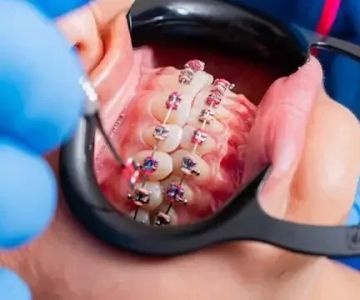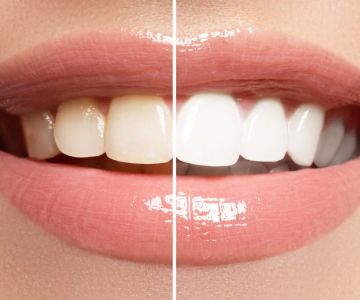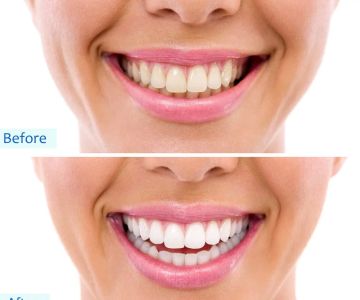What Are the Common Side Effects of Teeth Whitening Treatments?
Teeth whitening treatments have become increasingly popular among people seeking brighter smiles and improved aesthetics. While this cosmetic dental procedure has successfully helped millions achieve their desired results, it is not without its share of potential side effects. Understanding these can help individuals make informed choices about their dental care options. This article aims to shed light on the common side effects associated with teeth whitening, ensuring you're fully prepared before embarking on your journey to a radiant smile.
1. Tooth Sensitivity
Tooth sensitivity is perhaps the most frequently reported side effect of teeth whitening treatments. This condition typically manifests as a temporary discomfort or sharp pain when the teeth come in contact with hot or cold stimuli, including foods and drinks. The whitening agents used in most treatments, such as hydrogen peroxide and carbamide peroxide, penetrate the enamel to lighten the teeth. This process can sometimes irritate the nerves within the teeth, resulting in sensitivity. Research indicates that sensitivity is commonly experienced immediately after the treatment but usually subsides within a few days to a week. To mitigate this effect, dentists might recommend using desensitizing toothpaste or mouthwash before and after the treatment, helping to strengthen the enamel and reduce discomfort.
2. Gum Irritation
Another common side effect is gum irritation, which can occur if the whitening agents come into direct contact with the soft tissue in the mouth. This irritation can manifest as redness, swelling, or a burning sensation in the gums. Such incidents are more likely when over-the-counter whitening products or improperly fitted trays are used. Professional treatments at a dental clinic, like those offered by Dentistry Toothtruth, often include protective measures to shield the gums. If irritation occurs, it typically resolves on its own within a couple of days. To prevent this side effect, it’s crucial to follow application guidelines meticulously and consult with dental professionals when in doubt.
3. Uneven Whitening
Patients may sometimes experience uneven whitening, where some teeth or parts of the teeth are lighter than others. This can be more pronounced in individuals with pre-existing dental conditions, such as tooth decay or certain types of stains. For instance, teeth with gray or brown staining can be more resistant to whitening agents compared to those with yellow discoloration. Additionally, dental restorations like crowns, veneers, or fillings do not respond to whitening procedures, which can result in varied coloring. Consulting with a dentist at Dentistry Toothtruth before treatment ensures a comprehensive plan tailored to your specific dental needs, minimizing the risk of uneven whitening.
4. Over Whitening Effects
While striving for a bright white smile, some individuals might overuse whitening treatments, leading to over whitening or the "blinding white teeth" effect. This not only results in an unnatural appearance but can also increase the risk of side effects such as heightened sensitivity and potential damage to the enamel. It’s essential to adhere to the guidelines provided by dental professionals regarding the frequency of treatments. Overuse can lead to weakened enamel, making the teeth more susceptible to decay and cavities. Regular dental check-ups and guidance from Dentistry Toothtruth can help maintain a balanced and healthy whitening routine.
Conclusion: Making Informed Decisions for Your Smile
Understanding the potential side effects of teeth whitening treatments enables you to make informed choices concerning your dental health. While these procedures offer fantastic aesthetic benefits, they also come with risks that should be carefully considered. By consulting with dental experts at Dentistry Toothtruth and following their guidance, you can achieve the desired radiance while minimizing discomfort and preserving your oral health. Always weigh the benefits against the possible side effects and make decisions that favor long-term dental well-being.







 Westgate Dental Arts
Westgate Dental Arts Coventry Family Dental
Coventry Family Dental Familia Dental
Familia Dental Dr. Daniel S. Fife, DDS
Dr. Daniel S. Fife, DDS Dentistry At Suburban Square: Michael I. Wollock, DMD
Dentistry At Suburban Square: Michael I. Wollock, DMD Comfort Care Dental
Comfort Care Dental The Importance of Oral Health Education During Pregnancy for a Healthy Pregnancy
The Importance of Oral Health Education During Pregnancy for a Healthy Pregnancy Why Skipping Dental Checkups Can Lead to Bigger Oral Health Problems
Why Skipping Dental Checkups Can Lead to Bigger Oral Health Problems Best Tips for Brushing Your Teeth Properly for Healthy Gums: Essential Techniques for Oral Health
Best Tips for Brushing Your Teeth Properly for Healthy Gums: Essential Techniques for Oral Health Advantages of Porcelain Dental Restorations
Advantages of Porcelain Dental Restorations How Can Diabetes Cause Tooth and Gum Problems? Preventing and Managing Oral Health Issues
How Can Diabetes Cause Tooth and Gum Problems? Preventing and Managing Oral Health Issues Healthy Habits for Promoting Good Oral Health and Hygiene: Tips for a Healthy Smile
Healthy Habits for Promoting Good Oral Health and Hygiene: Tips for a Healthy Smile